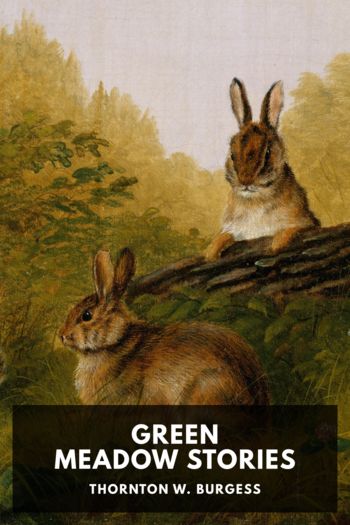The Scarlet Letter by Nathaniel Hawthorne (free biff chip and kipper ebooks TXT) 📕

- Author: Nathaniel Hawthorne
Book online «The Scarlet Letter by Nathaniel Hawthorne (free biff chip and kipper ebooks TXT) 📕». Author Nathaniel Hawthorne
By Nathaniel Hawthorne.
Table of Contents Titlepage Imprint Preface to the Second Edition The Customhouse The Scarlet Letter I: The Prison-Door II: The Marketplace III: The Recognition IV: The Interview V: Hester at Her Needle VI: Pearl VII: The Governor’s Hall VIII: The Elf-Child and the Minister IX: The Leech X: The Leech and His Patient XI: The Interior of a Heart XII: The Minister’s Vigil XIII: Another View of Hester XIV: Hester and the Physician XV: Hester and Pearl XVI: A Forest Walk XVII: The Pastor and His Parishioner XVIII: A Flood of Sunshine XIX: The Child at the Brook-Side XX: The Minister in a Maze XXI: The New England Holiday XXII: The Procession XXIII: The Revelation of the Scarlet Letter XXIV: Conclusion Endnotes Colophon Uncopyright ImprintThis ebook is the product of many hours of hard work by volunteers for Standard Ebooks, and builds on the hard work of other literature lovers made possible by the public domain.
This particular ebook is based on a transcription produced for Project Gutenberg and on digital scans available at Google Books.
The writing and artwork within are believed to be in the U.S. public domain, and Standard Ebooks releases this ebook edition under the terms in the CC0 1.0 Universal Public Domain Dedication. For full license information, see the Uncopyright at the end of this ebook.
Standard Ebooks is a volunteer-driven project that produces ebook editions of public domain literature using modern typography, technology, and editorial standards, and distributes them free of cost. You can download this and other ebooks carefully produced for true book lovers at standardebooks.org.
Preface to the Second EditionMuch to the author’s surprise, and (if he may say so without additional offence) considerably to his amusement, he finds that his sketch of official life, introductory to The Scarlet Letter, has created an unprecedented excitement in the respectable community immediately around him. It could hardly have been more violent, indeed, had he burned down the Customhouse, and quenched its last smoking ember in the blood of a certain venerable personage, against whom he is supposed to cherish a peculiar malevolence. As the public disapprobation would weigh very heavily on him, were he conscious of deserving it, the author begs leave to say, that he has carefully read over the introductory pages, with a purpose to alter or expunge whatever might be found amiss, and to make the best reparation in his power for the atrocities of which he has been adjudged guilty. But it appears to him, that the only remarkable features of the sketch are its frank and genuine good-humor, and the general accuracy with which he has conveyed his sincere impressions of the characters therein described. As to enmity, or ill-feeling of any kind, personal or political, he utterly disclaims such motives. The sketch might, perhaps, have been wholly omitted, without loss to the public, or detriment to the book; but, having undertaken to write it, he conceives that it could not have been done in a better or a kindlier spirit, nor, so far as his abilities availed, with a livelier effect of truth.
The author is constrained, therefore, to republish his introductory sketch without the change of a word.
Salem, March 30, 1850.
The Customhouse Introductory to The Scarlet LetterIt is a little remarkable, that—though disinclined to talk overmuch of myself and my affairs at the fireside, and to my personal friends—an autobiographical impulse should twice in my life have taken possession of me, in addressing the public. The first time was three or four years since, when I favored the reader—inexcusably, and for no earthly reason, that either the indulgent reader or the intrusive author could imagine—with a description of my way of life in the deep quietude of an Old Manse. And now—because, beyond my deserts, I was happy enough to find a listener or two on the former occasion—I again seize the public by the button, and talk of my three years’ experience in a Customhouse. The example of the famous “P. P., Clerk of this Parish,” was never more faithfully followed. The truth seems to be, however, that, when he casts his leaves forth upon the wind, the author addresses, not the many who will fling aside his volume, or never take it up, but the few who will understand him, better than most of his schoolmates or lifemates. Some authors, indeed, do far more than this, and indulge themselves in such confidential depths of revelation as could fittingly be addressed, only and exclusively, to the one heart and mind of perfect sympathy; as if the printed book, thrown at large on the wide world, were certain to find out the divided segment of the writer’s own nature, and complete his circle of existence by bringing him into communion with it. It is scarcely decorous, however, to speak all, even where we speak impersonally. But, as thoughts are frozen and utterance benumbed, unless the speaker stand in some true relation with his audience, it may be pardonable to imagine that a friend, a kind and apprehensive, though not the closest friend, is listening to our talk; and then, a native reserve being thawed by this genial consciousness, we may prate of the circumstances that lie around us, and even of ourself, but still keep the inmost Me behind its veil. To this extent, and within these limits, an author, methinks, may be autobiographical, without violating either the reader’s rights or his own.
It will be seen, likewise, that this Customhouse sketch has a certain propriety, of a kind always recognized in literature, as explaining how a large portion of the following pages came into my possession,





Comments (0)